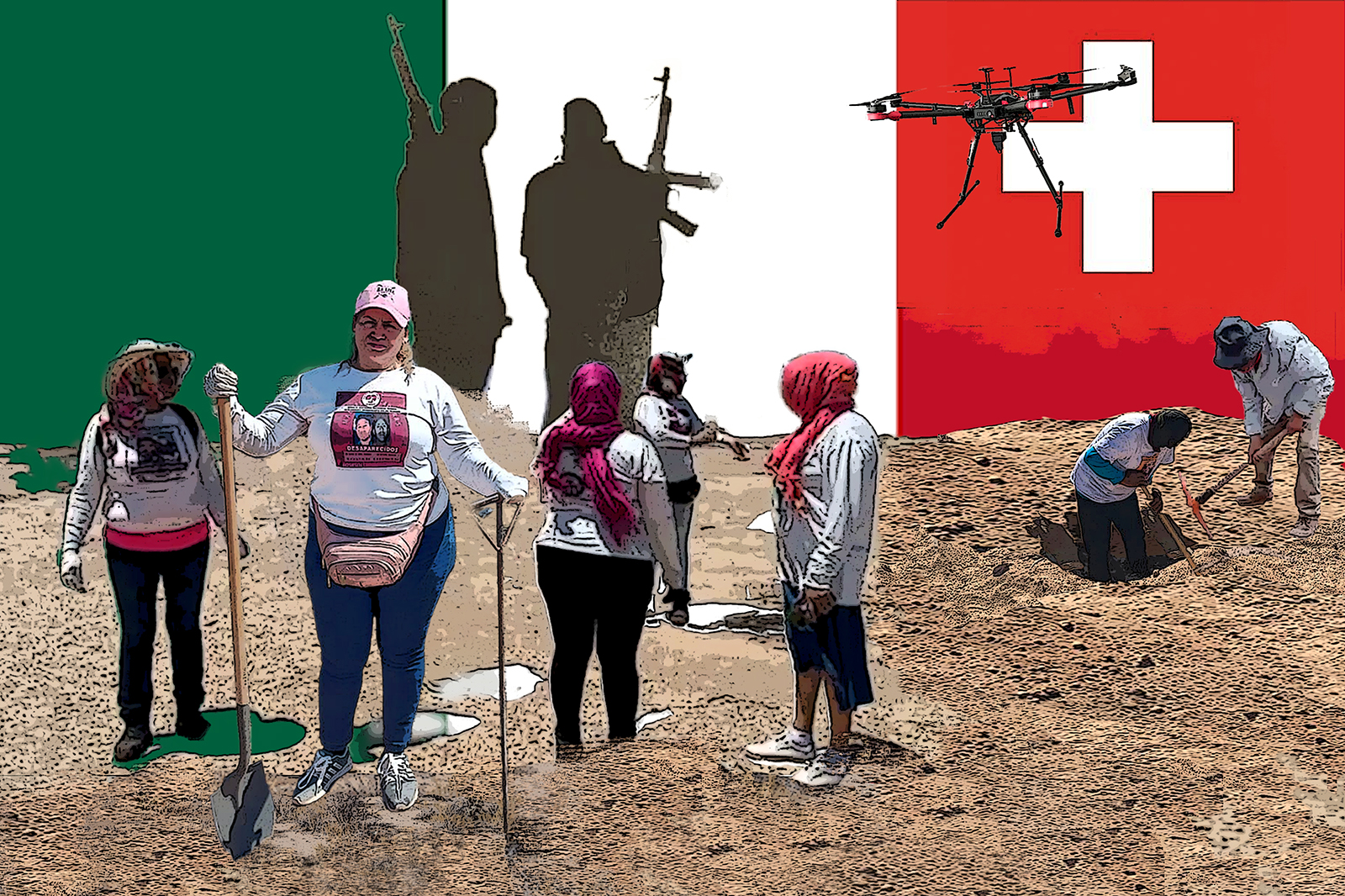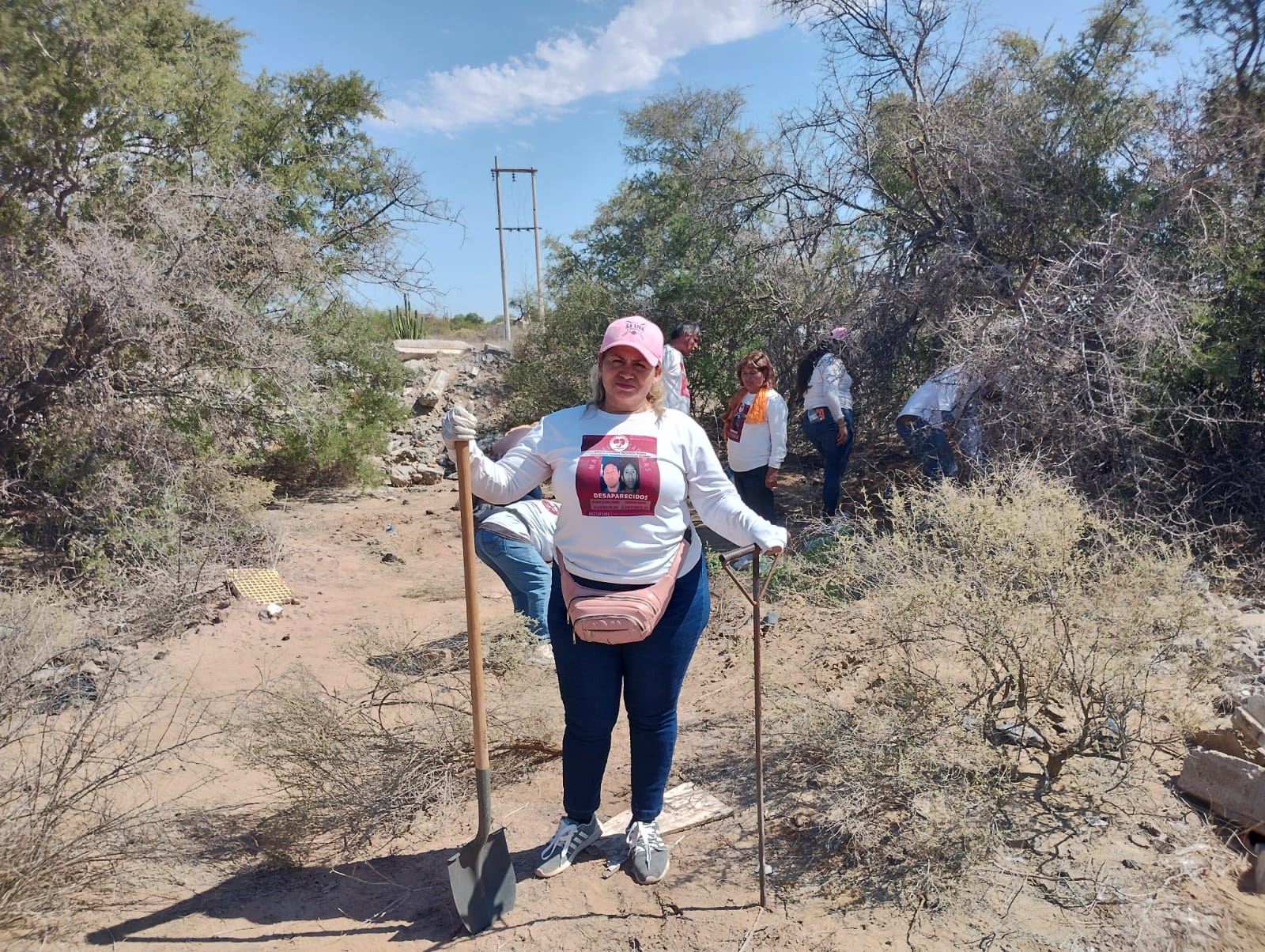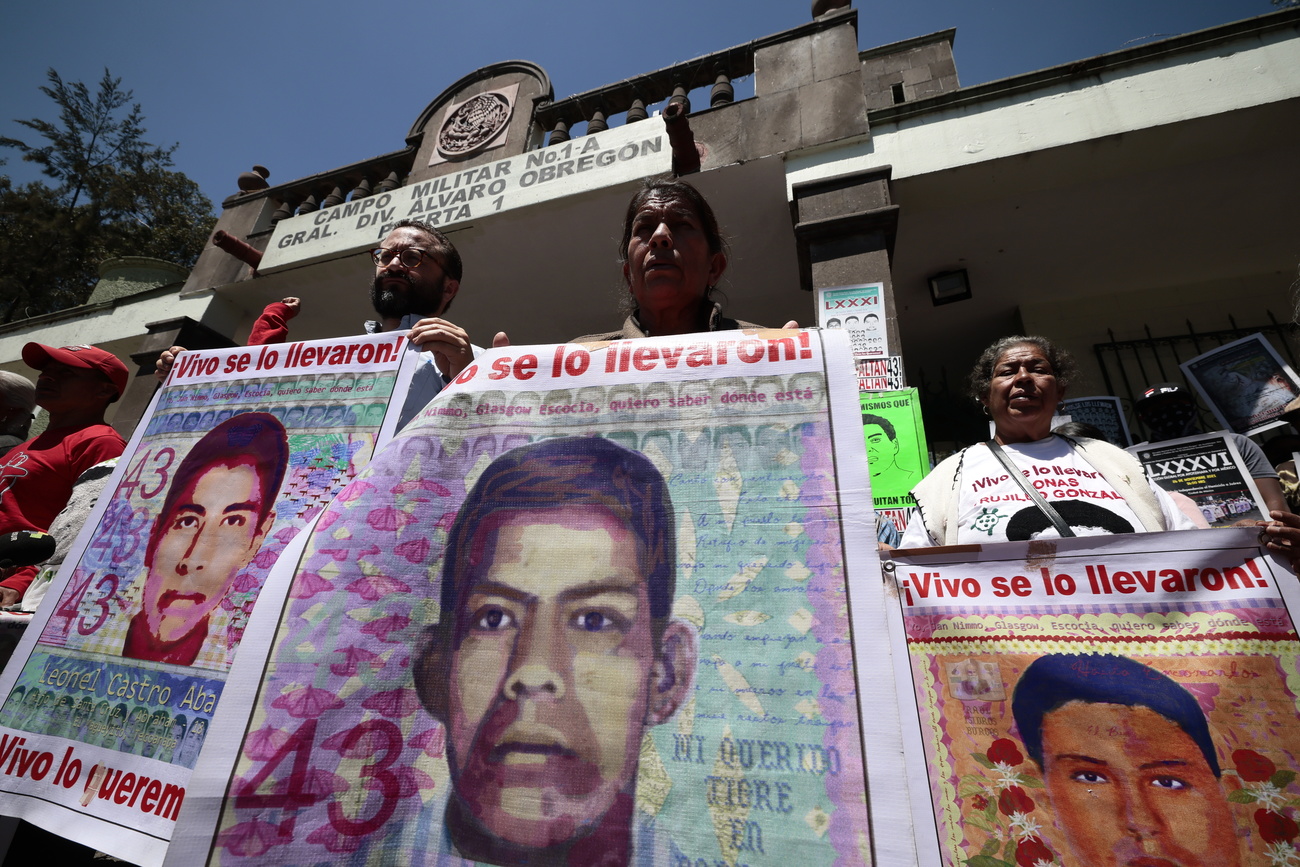
‘Hope never dies’: Swiss help Mexicans tackle enforced disappearances

Scores of people have been disappeared in the course of Mexico’s war on drugs. As the backlog of unidentified bodies surpasses 52,000, Switzerland is offering training in forensics to Mexican officials attempting to solve some of these cases.
Ceci Patricia Flores, dressed in long sleeves and jeans, a pink cap shielding her face from the sun, buries a wire rod as deep into the ground as she can. She then pulls it out and brings the buried end close to her nose. If she notes the smell of rotting flesh on the rod, it’s a sign she must start digging in this exact spot.
This is Flores’s daily routine out on the arid terrain of Sonora, a state in northwestern Mexico. The 50-year-old mother of six is searching for the bodies of victims of enforced disappearances in a region where organised crime is rampant.
Among the victims she’s looking for are two of her own children. Alejandro, 21, was “disappeared” on October 30, 2015, while travelling from Sonora to the neighbouring state of Sinaloa. Marco Antonio, 32, was taken by a cartel in Bahía de Kino, Sonora, on May 4, 2019, together with his younger brother, Jesús Adrián, 15, who was later released.
“Since then, I am like the walking dead,” says Flores, who in 2019 founded the collective Madres Buscadoras de Sonora, the Searching Mothers of Sonora. Each day she’s joined in her search by other mothers and family members with a story similar to her own. They are taking matters into their own hands, says Flores, because “the authorities have so far failed to do it”.

More
One mother’s anguished search for the disappeared in Mexico (video)
Their arduous, unpaid work has extended to other parts of the country, as Mexico faces up to a grim reality: over 110,000 names entered in a national database of missing persons and more than 52,000 unidentified bodies lyingExternal link either in mass graves or in state morgues. Mexican authorities have labelled it a “forensics crisis” and asked other countries, including Switzerland, for assistance.
Lack of forensics capacity across Mexico
For this task, the Swiss foreign ministry tapped the University of Lausanne’s School of Criminal Sciences. Together with the University Centre of Legal Medicine Lausanne-Geneva (CURML), in 2022 the school set up courses in forensic science for Mexican officials involved in search and investigation of the disappeared.
So far, 100 participants – ranging from prosecutors and police officers to forensic pathologists and anthropologists – have taken a basic course, offered remotely and focused on crime-scene investigation, forensic analysis and identification of human remains.
“We are coming from such different environments and complexity in terms of cases that it would be ridiculous to say that we can grasp and tackle the problems [the Mexicans] are facing, and it is not our objective,” explains Christophe Champod, director of the Lausanne school. “What we are trying to do is give them a methodology that they can apply in their own situation.”
That situation is nothing short of daunting. The vast majority of disappearances in Mexico have occurred since the mid-2000s, when authorities launched their war on drugs to root out cartels. Each year, thousands of people disappear at the hands of organised criminal groups or those of government forces.
Most of these cases remain unsolved in what the United Nations callsExternal link a climate of “almost absolute impunity”. According to the national search commission, by 2021 only 36 convictions for disappearances had been handed down.
Among the many challenges facing Mexicans is a lack of resources spread across the country. Skills and funding for search, investigation and prosecution tend to be concentrated at the federal level, says Ana Srovin Coralli, a teaching assistant at the Geneva Graduate Institute.
“There is a huge lack of capacity in terms of premises, laboratories and staff at the local level,” says the PhD student, who wroteExternal link a comprehensive report on Mexico’s disappeared for the research institute swisspeace. Some local search commissions, set up by law in each state to look for the disappeared, are understaffed or have no forensic expert on the payroll.
Maximising the impact of Swiss forensics training
Although the authorities say they want to tackle these deficits, “there is no systematic and coordinated approach to improving forensics in the country” and little collaboration between some institutions, says Coralli. “This is where I think training can really make a contribution – to reach those that usually don’t have the opportunity to gain more knowledge.”
Although the Swiss had no hand in selecting the course participants – this was done by the Mexicans – Champod says they come from different states as well as the federation and occupy various functions. This mix should “maximise the impact” of the training and show the value of working together, he says.
According to Coralli, to be truly effective, any training also needs to be long-term and ideally take place in the field, “to fully address the complexities of the situation”.

Champod is aware of the limitations of the course, which was moved online partly because of the Covid-19 pandemic. He says his team has worked closely with the Mexicans to make sure the material responds to their needs. The basic course is being followed up by a more advanced course, limited to a smaller group of participants, in which the instructors can offer individual feedback.
“Probably the next step would be to go back to in-person learning, shoulder to shoulder on-site,” he says, “and potentially a visit from the Mexican colleagues [to Switzerland].”
No closure for grieving families in Mexico
Security was also a factor in the decision to offer the programme remotely. Uncovering bodies, collecting samples, investigating and prosecuting are tasks fraught with risk. Flores says she has received death threats, as relatives and public officials alike regularly become targets and go missing themselves. For this reason, participants in the Swiss course have been given full anonymity.
“We have absolutely no idea who is who, because we think it is the only way we can maintain their security,” says Champod.
Participants in the advanced course are able to test a drone equipped with a multispectral camera that can detect clandestine graves. “We want to offer solutions where they can do things quickly,” says Champod, “because the longer they’re on the scene gathering information […] the more exposed they are.”
The fear of retribution may well be holding some authorities back from conducting investigations, but Flores believes there is also a lack of will on their part – an observation echoed by Coralli, who says will needs to exist at all institutional levels, if searches and investigations are to succeed.
Remarkably, the Searching Mothers of Sonora have uncovered more than 2,000 bodies in clandestine graves. Yet these results have brought closure to few families.
“We pull them out of a hole and the authorities put them back into another hole without giving them back their identity,” she says.
“We need authorities who are truly sensitive to human beings and who do their job in the forensic investigation so that the DNA tests are released as quickly as possible, without errors.”
‘It’s the people who will solve the problems’
The job of identifying multiple remains, however, is highly complex, says Negahnaz Moghaddam, a forensic anthropologist at the CURML in Lausanne and an instructor in the course.
“If you have a mass grave, you have to first understand the situation – how many individuals are there, which of the remains are human, and which elements can be sampled [for analysis],” she explains.
Hopes were raised that this demanding work would pay off when Mexico set up the so-called Extraordinary Forensic Identification Mechanism in 2019. Its aim is to identify the more than 52,000 bodies that have been recovered as of August 2021. But the mechanism has struggled to get off the ground, notably because of a high staff turnover, says Coralli.
In 2018, the General Law on Disappearances came into force in Mexico. It provides a definition for enforced disappearance (disappearance in which the state is directly or indirectly involved) and disappearance by private individuals, and establishes a national search system. This system consists, among other institutions, of a national search commission, a local search commission in each of the country’s 32 states, plus a new federal prosecutor’s office specialised in enforced disappearances and similar prosecutor’s offices at state level.
Under the general law, a new register for missing and disappeared persons was created, although it contains all categories of missing and disappeared persons, including voluntary absences and those missing due to events not linked to a crime. The exact number of people who have been forcibly disappeared is therefore unknown.
Source: Ana Srovin Coralli, Coordination between the Search and Criminal Investigations Concerning Disappeared PersonsExternal link.
For families, it may be another sign of the failure of the authorities to address disappearances. But Champod says he has seen a “willingness and commitment” among the officials to improve procedures and find, identify and even potentially prosecute those responsible.
“At the end of the day, it is the people and the coordination between them that will solve these problems,” he says.
Flores and the other families have been waiting for nothing less: all they want is to work hand-in-hand with the authorities to bring their children home, dead or alive.
“Hope never dies,” says the mother. “We want a Mexico that stops being a mass grave and lets our children live in safety again.”
Edited by Virginie Mangin

In compliance with the JTI standards
More: SWI swissinfo.ch certified by the Journalism Trust Initiative




























You can find an overview of ongoing debates with our journalists here . Please join us!
If you want to start a conversation about a topic raised in this article or want to report factual errors, email us at english@swissinfo.ch.